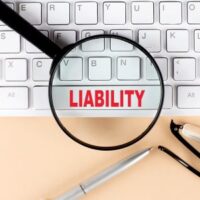Chain Reaction Accidents in Pennsylvania: Understanding Liability When Multiple Drivers Are Involved

Car accidents involving multiple vehicles, often known as chain reaction collisions, are particularly stressful and complicated events. Unlike typical two-car accidents, these collisions involve several drivers, various levels of impact, and complex scenarios when determining fault and liability. Pennsylvania drivers caught in these incidents often find themselves navigating intricate legal issues, making the guidance of experienced attorneys crucial for protecting their rights and securing fair compensation.
How Do Chain Reaction Accidents Occur?
Chain reaction accidents typically begin with a single collision that triggers subsequent impacts involving multiple vehicles. These accidents commonly occur in high-density traffic areas, on busy highways, or in adverse weather conditions where visibility is limited and reaction times are compromised. For instance, a rear-end collision at a traffic stop can swiftly escalate into a multi-vehicle accident if trailing drivers fail to stop in time.
The immediate chaos of a chain reaction accident is overwhelming. Victims often experience confusion and uncertainty about the appropriate steps to take next. The complexity of these incidents lies in deciphering exactly who is at fault, which is usually a complicated task given the multiple parties involved and the varying accounts of how the accident unfolded.
Determining Liability in Chain Reaction Collisions
Assigning liability in multi-vehicle accidents is inherently complex. Pennsylvania follows a comparative negligence system under 42 Pa.C.S. § 7102. This means liability can be distributed among multiple drivers involved in an accident. Each driver’s percentage of fault directly affects the compensation they may receive. For example, if a driver is determined to be 30% responsible for an accident, their recoverable compensation will be reduced by that percentage.
In chain reaction accidents, investigators, insurance adjusters, and legal representatives will closely analyze numerous factors, including driver behavior, road conditions, vehicle maintenance, weather, and compliance with traffic laws. The initial cause of the accident plays a significant role, but subsequent drivers’ actions and reactions also carry considerable weight in liability assessments.
Common Liability Scenarios in Chain Reaction Accidents
Several typical scenarios highlight the complexity of liability in these incidents. One common situation involves rear-end collisions. The driver at the rear-most position who initially collides with the vehicle in front is often presumed to be at fault due to failing to maintain a safe following distance. However, additional drivers may also share liability if they contributed to further impacts by following too closely, speeding, or driving distracted.
Another prevalent scenario is accidents occurring in hazardous weather conditions, such as heavy rain, snow, or fog. In this scenario, each driver’s actions in adapting to road conditions, such as reducing speed or increasing following distances, will be scrutinized to determine negligence.
Pennsylvania courts and insurance companies often rely on detailed accident reconstruction reports, eyewitness testimony, traffic camera footage, and police reports to clarify the chain of events and accurately attribute liability.
Challenges for Victims in Chain Reaction Collisions
For victims involved in these complicated accidents, the path to compensation can be arduous. Insurance companies frequently engage in prolonged investigations to mitigate their liability. With numerous insurers involved, each defending their policyholders and interests, resolving claims swiftly and fairly can become increasingly difficult.
Victims also face the challenge of proving that the specific injuries directly resulted from the accident, especially when multiple impacts are involved. It becomes imperative to gather thorough medical documentation immediately after the incident to substantiate claims effectively.
The Importance of Legal Representation
Given the complexities and stakes involved, having knowledgeable and experienced legal representation becomes vital. Attorneys experienced in handling car accident cases understand the nuances of Pennsylvania’s comparative negligence laws and have the expertise to navigate the detailed investigations that chain reaction collisions necessitate.
An experienced attorney can assist in several crucial ways. They can gather and preserve essential evidence swiftly, engage qualified accident reconstruction experts, communicate effectively with insurance adjusters, and advocate vigorously in settlement negotiations or court proceedings. An attorney ensures your rights and interests remain protected throughout the entire claims process, providing you with peace of mind and allowing you to focus on recovery.
Steps to Take After a Chain Reaction Accident
If you’re involved in a multi-car accident, your actions in the immediate aftermath significantly impact your claim. First, seek medical attention for any injuries, no matter how minor they appear. Prompt medical evaluation establishes a direct link between your injuries and the accident.
Second, document as much information as possible at the accident scene. Take photographs, gather contact information from witnesses, and ensure you obtain copies of police reports. Avoid admitting fault or speculating on the accident details to other parties or insurance adjusters before consulting your attorney.
Finally, promptly consult experienced Philadelphia car accident lawyers. Timely legal advice helps preserve vital evidence and improves the chances of securing fair and full compensation for your losses.
Contact The Villari Firm
At The Villari Firm, our attorneys have a proven track record of handling complex multi-vehicle accident claims in Pennsylvania. We are committed to thoroughly investigating your case, clearly identifying liable parties, and advocating aggressively to achieve maximum compensation. Don’t face these complexities alone—contact us today to discuss your case and secure the dedicated, compassionate legal support you deserve.
Source:
legis.state.pa.us/WU01/LI/LI/CT/HTM/42/00.071.002.000..HTM
